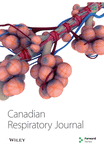Does Prone Positioning Improve Oxygenation and Reduce Mortality in Patients with Acute Respiratory Distress Syndrome?
Abstract
The emergence of computed tomography imaging more than 25 years ago led to characterization of acute respiratory distress syndrome (ARDS) as areas of relatively normal lung parenchyma juxtaposed with areas of dense consolidation and atelectasis. Given that this heterogeneity is often dorsally distributed, investigators questioned whether care for ARDS patients in the prone position would lead to improved mortality outcomes. This clinical review discusses the physiological rationale and clinical evidence supporting prone positioning in treating ARDS, in addition to its complications and contraindications.




